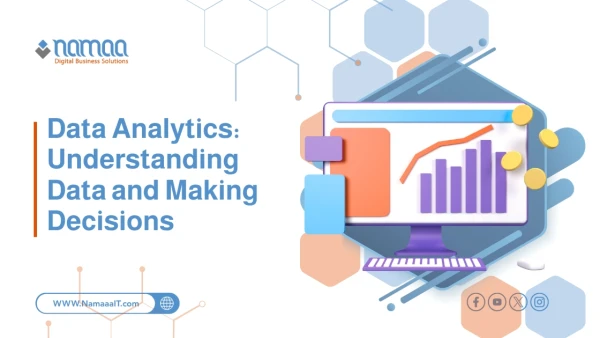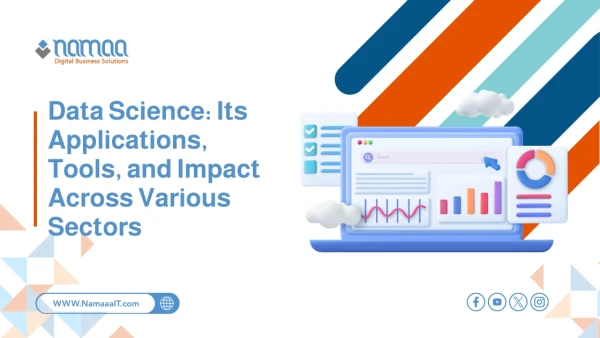Enhancing Business Strategies with Data
Data has become the fuel that drives business growth. Companies no longer rely solely on intuition or personal experience to make strategic decisions; instead, data forms the foundation upon which these decisions are built. This highlights the importance of understanding how to optimize business strategies using data.
In this article, we will explore how companies can maximize the value of their available data to improve strategies and achieve goals. We will cover several key topics:
Why is Data a Strategic Asset for Businesses?
Companies that invest in data collection and analysis can identify opportunities and challenges faster than their competitors, giving them a clear competitive edge. For example, by analyzing sales data, businesses can recognize seasonal patterns and adjust marketing plans accordingly.
Data also enables managers to evaluate performance accurately and optimize resource allocation. Additionally, data plays a crucial role in risk management, helping companies anticipate potential problems before they arise and take preventive actions. Moreover, data-driven decisions reduce reliance on intuition, increasing transparency and accountability within the organization.
In reality, businesses that adopt a data-driven approach are more innovative and capable of achieving sustainable growth. As analytical tools continue to advance, the ability to extract valuable insights from data has become an essential skill for any business aiming to thrive in an ever-changing market.
Types of Data That Matter to Businesses
Businesses handle vast amounts of data daily, but not all data holds equal importance. To make informed decisions, companies need to focus on specific types of data based on their industry and objectives:
Customer Data: This is among the most critical data types. It includes demographics, preferences, purchasing behavior, and browsing history. Such data helps companies design highly personalized products and marketing experiences.
Operational Data: Metrics related to efficiency, production times, failure rates, and internal performance levels. This data aids in improving productivity and reducing costs.
Market and Competitor Data: Insights into industry trends and competitor movements enable businesses to adjust their strategies proactively.
Financial Data: Includes revenue, profits, cash flow, and operational costs. These insights are vital for strategic planning and budgeting.
Unstructured Data: With technological advancements, businesses now recognize the value of unstructured data such as customer reviews, social media comments, and multimedia content. Understanding public sentiment through this data provides deeper insights into customer behavior.
The key is to collect and analyze this data intelligently and systematically, transforming raw information into actionable insights that enhance business performance.
Learn about: Leveraging AI for Smarter and Data-Driven Decision-Making
How to Improve Business Strategies Using Data
We will explore practical steps and effective applications to optimize business strategies through data utilization.
1. Developing a Comprehensive Data Strategy
To establish a strong foundation for leveraging data, companies must develop a well-rounded data strategy that includes:
Defining Objectives: Goals should be clear and measurable, such as enhancing customer experience or improving operational efficiency.
Data Integration: Consolidating data from different departments into a centralized system ensures information consistency and accessibility.
Data Governance: Implementing policies and procedures to maintain data quality, security, and compliance with legal regulations.
This strategy improves decision-making quality and operational effectiveness.
2. Understanding Customer Behavior and Personalizing Experiences
By analyzing customer data, businesses can:
Identify Preferences: Determine which products or services are most popular and which ones are underperforming.
Personalize Offers: Deliver tailored promotions to customers based on their behavior and needs, enhancing customer satisfaction and loyalty.
For example, e-commerce companies use data analytics to provide personalized product recommendations, boosting cross-selling opportunities and increasing revenue.
3. Optimizing Operational Efficiency and Informed Decision-Making
Data contributes to streamlining internal processes by:
Efficiency Analysis: Identifying areas that require improvement and reducing waste.
Demand Forecasting: Using predictive models to estimate future demand and optimize resource planning.
Risk Management: Detecting potential risks and taking proactive measures to mitigate them.
These insights enable companies to make well-informed decisions, improving efficiency and effectiveness.
4. Driving Innovation in Products and Services
Data can serve as a catalyst for innovation by:
Analyzing Market Needs: Identifying gaps in the market and developing solutions that address them.
Testing Ideas: Using data to evaluate the feasibility of new concepts before launching them.
For instance, a tech company may observe increasing demand for specific app features and subsequently develop updates to meet those needs.
5. Enhancing Marketing and Sales Strategies
Data-driven marketing improves effectiveness by:
Market Analysis: Understanding industry trends and identifying new opportunities.
Targeted Campaigns: Designing marketing campaigns that effectively reach specific customer segments.
Performance Measurement: Tracking key performance indicators (KPIs) to assess campaign success and adjust strategies accordingly.
For example, a clothing brand might use sales data to identify best-selling items and focus marketing efforts on those products.
6. Cultivating a Data-Driven Culture Within the Organization
To maximize data utilization, businesses should:
Train Employees: Equip staff with the necessary skills to analyze and use data effectively.
Encourage Collaboration: Foster interdepartmental cooperation for data sharing and collective insights.
Promote Data-Based Decision-Making: Encourage evidence-based decision-making over intuition.
This culture fosters innovation and strengthens the company’s competitive edge.
7. Leveraging Advanced Tools and Technologies for Data Analysis
To effectively utilize data, companies should invest in:
Advanced Analytics Tools: Utilize data analysis software and machine learning for valuable insights.
Artificial Intelligence Solutions: Apply AI to analyze large datasets quickly and accurately.
Data Management Systems: Develop a robust infrastructure for secure and efficient data storage and processing.
These tools help transform raw data into actionable business insights.
8. Continuously Measuring and Evaluating Performance
To ensure the effectiveness of data-driven strategies, companies should:
Define Key Performance Indicators (KPIs): Select metrics that reflect strategic success.
Regularly Review Performance: Assess progress and identify areas for improvement.
Adapt to Changes: Modify strategies based on outcomes and market shifts.
This approach ensures continuous improvement and goal achievement.
The Role of AI and Machine Learning in Data Analysis
Artificial intelligence (AI) and machine learning (ML) play a crucial role in business data analysis by extracting deep insights from massive datasets with speed and accuracy beyond human capabilities. These technologies can detect hidden patterns, predict customer behavior, and identify opportunities or threats before they arise.
For instance, businesses use AI to personalize customer experiences, forecast sales trends, and detect early signs of equipment failures. AI also automates data analysis processes, saving time and reducing human error.
The true power of AI lies in its ability to process unstructured data—such as text, images, and videos—turning them into actionable insights. Therefore, integrating AI into data strategies is essential for companies seeking to enhance their decision-making processes, strengthen their market position, and stay ahead of the competition.
 Home
Let's think together
Articles
About
Contact Us
عربي
عربي
Home
Let's think together
Articles
About
Contact Us
عربي
عربي








